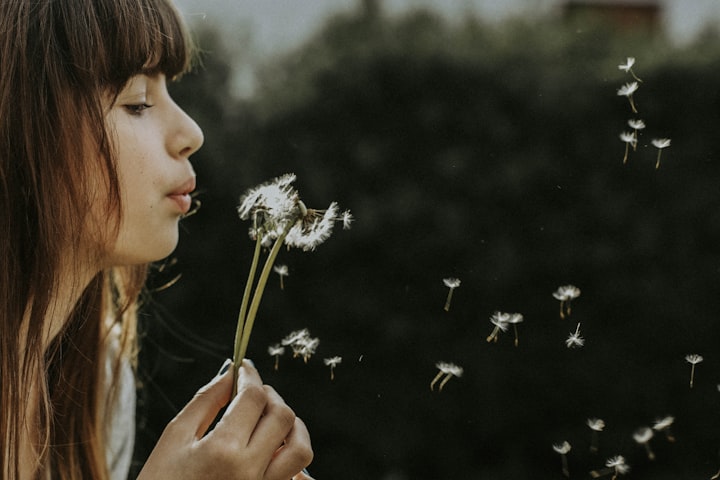
I used to think that working hard and making more money is the only way towards happiness. For most of my life, I procrastinated on satisfaction by waiting for extraordinary events and worldly success.
There was always something I was eyeing on, and that thing had me controlled. Studying engineering wasn’t my first choice, but I had to go for it like every other Indian kid in the earlier 2010s. Most of my days during college were spent waiting to get out of college. Nothing seemed to make me happy. Even when I got the golden chance to skip engineering to study design — the moment I was waiting for for months. The joy of studying in my dream college didn’t last as I had expected.
I was back to my default state, hunting for a new milestone to be happy again. Now, my happiness was associated with getting good grades and finding myself a great internship.
As my desires kept moving, happiness kept rolling with it.
I spent most of my time waiting for a reason to be happy — for the right moment and the right opportunity. I strangled myself by creating this vicious cycle of happiness and then gasp for breath. The perpetual want for MORE was a deadly way to enjoy life.
The worst part about the happiness boost is it was momentary. It only lasted for a day or two, and the whole cycle kept repeating.

Hedonic Treadmill
When I dug deeper, I learned that the eternal cycle I was going through is called a Hedonic Treadmill. A person tends to come back to their original happiness level despite achieving success and reward of any kind.
In a research study done by the professors of Northwestern and Masssachutes University on lottery winners and significant accident victims to understand the relativity of happiness, researchers observed that happiness level after the initial impact of extraordinarily positive or negative events went back to the default level. People quickly adapt back to hedonic neutrality. The rise in income results in no permanent gain in happiness and nor does any major event in our lives.
The occasions I waited for months and years only had a temporary effect on my happiness. All those months and years waiting was not worth it in the end.
I started observing my friends and peers. I wanted to know what made them happy so I could implement it in my own life. Over the months of scrutiny and silent observation (in no creepy sense), success was indeed not the only thing that made people happy.
My friends, who were genuinely happy and not just on social media, had less to do with their jobs and external factors. They enjoyed every day and had more control over their emotions. They didn’t have a book under their name or a thriving business like other friends in our circle, but they were happier than most of us. They didn't need any reason to be satisfied.
When I looked at my other set of financially better off friends than us, I learned that they were stressed most of the time. I often found them discussing their plans and goals. What set them different from the formal group was their association with happiness, which was similar to mine — rewards and professional success.
This juxtaposition made me wonder — if I was associating happiness with the wrong things, if success, money, or a significant event didn’t affect my happiness, then what did? People in the poorest countries are happier than the ones in developed countries.
What do they do differently than me?
I had to find it out.

Taking Control of My Happiness
In most cases, I was happy by the pleasure I received from the outside world in terms of validation and results. I could not devour the present moment, which meant I was always eyeing what the future had in store for me.
The main difference between happy and unhappy people were their habits. Sonja Lyubomirsky, psychology professor and the author of The How of Happiness, observed that happy people savor pleasures and live in the moment.
When I waited for an event or a person to made me happy, I gave the Happiness Button to that event or to that person. I never really had it under my control. My future controlled my present moment, and there was no guarantee that the events I was expecting would happen.
What I didn’t understand was life happens today. It happens this moment. It comes as it may and how I react to it defines how I feel about it. And I can control the Happiness Button as much as I want to.
The events and results I was waiting for had control over me. My boss could control my emotional stability by not giving me a promotion; my imaginary boyfriend could make me sad by not listening to me. Anyone can make me feel happy and sad when they have control of my Happiness Button. It’s like giving someone my voodoo doll to play with my emotions to sabotage myself.
Stoics have been practicing controlling emotions and not letting anything outside trigger their feelings.
“We should always be asking ourselves: “Is this something that is or is not, in my control?” — Epictetus
Most self-help gurus describe happiness as a state of mind. I have found hundreds of books that mention it, but none explained how to infuse that internal state in life.
In the quest to stay happy and avoid getting stuck in the eternal loop of waiting and hoping, I came up with an analogy of the Happiness Button, which helped me stay happy and content.
The Concept of the Happiness Button
Happiness Button is my way of getting rid of the treadmill trap. The button's objective is to allow me to control happiness and satisfaction in the present moment.
Consider there’s a remote control that controls all your emotions. When we get into a relationship, we confer this control to our partner unknowingly, and everything they do brings turmoil to our current state.
We unknowingly give this remote to our friends, boss, colleagues, and people we don’t even know on the internet. I gave this remote control to events and rewards of the future, and they controlled my happiness.
We unknowingly let everyone control the device that controls us.
This control system has all kinds of buttons in it. I created my own happiness button on this system and only limited the control to myself.
The understanding that I can allow myself to feel a certain way is powerful. When we control our happiness, we don’t depend on others (people, things, and in my case, rewards) to feel happy.
Once we have the control in your hand, we can start creating buttons.
To create these buttons, we need to associate happiness with as many things as possible. When we associate these buttons with trivial things under our control and have no external influence, we allow ourselves to live in the present and give ourselves enough reasons to be happy.
These may be trivial and mundane things, but our reaction to them makes all the difference. As Epictetus cited
“It’s not what happens to you, but how you react to it that matters.”
More associations = more happiness
These buttons act as trigger points to invoke certain emotions in you. When we start associating things with certain things, we build a behavior pattern that makes us feel a particular way every time we face it.
When we associate or create a happiness button, we create a positive trigger in our minds. A recent study done by American psychology professors shows how positive activities create a habit loop that affects our well-being. They observed that positive actions served as triggers — that is, they predicted tremendous prosocial effort, which in turn predicted greater well-being immediately.

What if we could change that association and make it a new button on our happiness remote control. That trigger is under our control, and we often forget about its existence in trivial things.
3 Steps to Practice happiness Button in your life
Step 0: Getting comfortable taking control of your emotions. The right mindset would work wonders before you start practicing the happiness button exercise.
Step 1: Make a list of things you enjoy doing every day; it could be your morning cup of coffee, listening to music, journaling, or reading. These activities should be under your control and shouldn’t have an external influence.
Note: If you’re a health freak, you can add your daily workout or healthy diet to the list, or if you’re an artist, you can choose activities related to your art and creativity.
Step 2: Once you’ve selected the list of things you’re going to be using as your happiness button, you need to start paying extra attention to them. You need to be fully present while you perform them. If it’s reading that you’ve chosen as an association, feel the pages of the book, smell them, and be mindful of the activity you’re engaged in.
Step 3: The associations in your happiness button may take a few weeks to form. But it would help if you gave your mind enough time to create a positive trigger and form that recurring loop.
Creating Positive Triggers
Health-Related
Adding a happiness button to your daily workout can be a great way to feel excited about your training, and it’s also a great way to stick with it. You working out have no external control but want to work out, making a perfect deal to be fit and happy at once.
Be mindful about what you’re eating. Add a happiness button to a healthy meal so every time you devour your favorite salad, you can click on that happiness button as well.
Work-Related
The moment you sit down at your chair or start your computer, remind yourself how lucky you’re to have the job and the opportunity to work on it. You can add a positive trigger to your DIY office workstation or your laptop.
Creating a happiness button with every article you publish will make a positive trigger. It will also allow you to not depend on any vanity metric to feel happy about your work.
Self-care Related
You can alter how you feel about writing in your journal. Associate a happiness button to the act of picking up your journal and writing your thoughts.
Drinking green tea, vitamins, or eating raw food — choose one or more self-care indulgences you do every day and associate a happiness button to any of them.
If you have enough happiness triggers in your day to day life, you won't wait for a major event or a promotion to feel happy.

Happiness buttons I created for myself to have a happier new year
- I read a quote by Naval Ravikant, which aligned with the concept of the Happiness Button— “If your morning coffee doesn’t make you happy, buying a yacht won’t either.” This line struck a chord with me, and I made my morning coffee a happiness button. Now, every morning I get up, I feel happy just by making myself a cup of black coffee. It sets the right tone for my day.
- Journaling has been a part of my life for the last 15 years. It helped me document my thoughts and became self-aware. After associating it with my happiness button, I feel energized and lucky to have my journals to make me feel therapeutic.
- I have always wanted to be a writer. The focus was on rewards, fame, and book tours. I was living in my imaginations. Ever since I introduced the happiness button to writing, I have become mindful of my journey as a writer and have started enjoying the process. I feel grateful every time I sit down and work on an article. I enjoy the journey and don’t wait for a reward to make me glee.
- Every time I pick up a book, it triggers the right emotions, and I feel blessed to have the time and access to the books that I want to read and learn from. It doesn’t matter if I finish the book or not; the act of reading clicks my happiness button.
- Nature has been my savior all these years. After adding nature to my happiness button, my walks amidst a dense park under the blue sky or witnessing a marvelous sunset makes me feel happy. I don’t have to wait for a great day to enjoy nature.
Conclusion
I can’t retrieve the amount of time I have wasted in waiting to get happy. I procrastinated my happiness with my virtue. My happiness was dependent on things I wasn’t even sure I’d get. But I am grateful that I let go of that pattern and started living in the present and enjoying the little things in life.
Tomorrow is not guaranteed; all we have is today. If we want to make the most of our lives, we’ll have to control the happiness button in our own hands. When we start taking control of our happiness, life will look like the gift it is, and we will be amazed at how beautiful it is.
Children are the happiest because they have multiple happiness buttons.
They get happy by playing in the field; they enjoy it when it rains. Food brings them happiness, and so do their friends. They live in the moment and control their happiness button. Whereas, we as adults, wait for that special moment to feel happy.
“It isn’t what you have or who you are or where you are or what you are doing that makes you happy or unhappy. It is what you think about it.”
— Dale Carnegie
We can be happy by creating positive triggers in our every day instead of putting it on hold. We deserve to be happy now.
About the Creator
SB
Observing and writing.






Comments
There are no comments for this story
Be the first to respond and start the conversation.